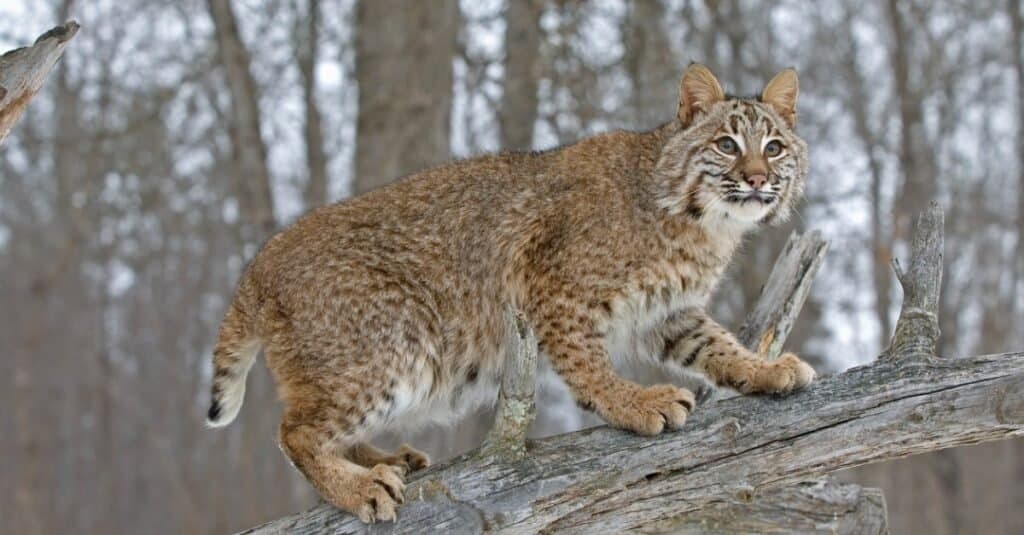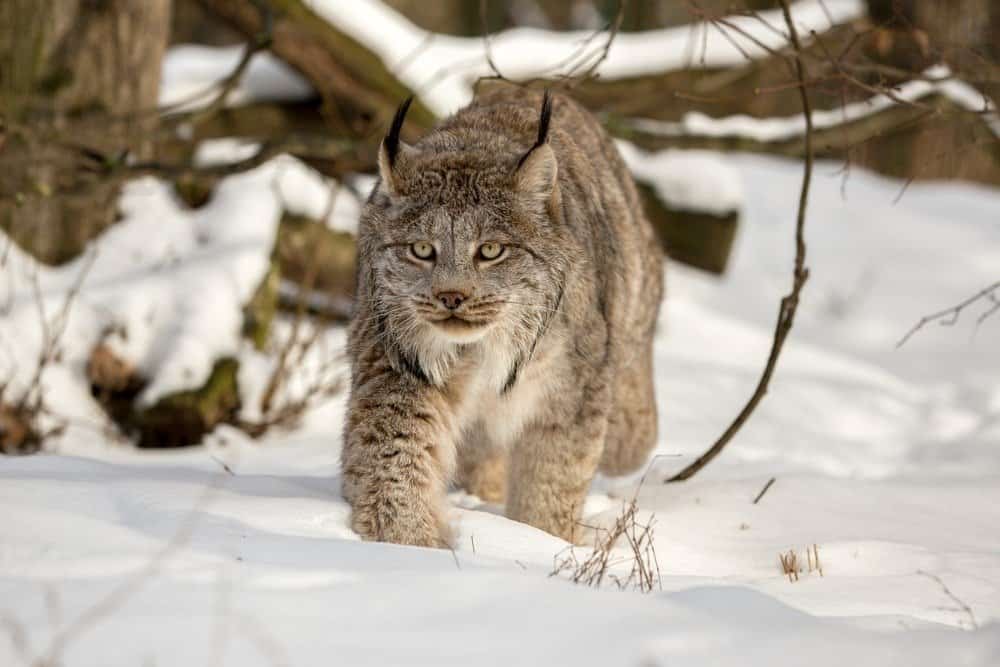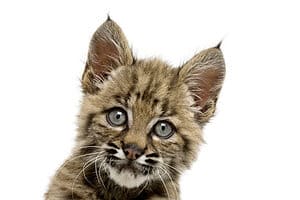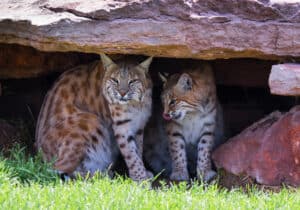New York State is part of the bobcat’s (Lynx rufus) huge native range, but how many bobcats are roaming in the state today?
The Bobcat
Bobcats are medium-sized wildcats, roughly twice the size of a typical housecat. The two dominant subspecies in the United States are Lynx rufus rufus (found in the eastern and midwestern United States, including New York) and Lynx rufus fasciatus (found west of the Great Plains).
Bobcats are largely nocturnal carnivores. They spend most days in dens found in rock crevices and hollow trees. This elusive, nocturnal nature severely limits human/bobcat encounters.
The bobcat ranges from southern Canada to southern Mexico, including most of the continental United States. This medium-sized cat adapts to a variety of habitats, including forests, mountain woodlands, swamps, deserts, and even suburban areas. Bobcats are the most widespread wildcat in North America.

Bobcats spend most of the daylight hours tucked away in dens.
© Johann Knox/Shutterstock.com
How Many Bobcats Are in New York State?
Precise bobcat population numbers for the entire state are difficult to ascertain. In eastern and southern New York, where there is a legal trapping season for bobcats, the population is estimated to be around 5,000 cats. Bobcat population estimates are unavailable in western and central New York, where trapping is prohibited, so there is no way to know just how many bobcats roam the state as a whole. What we do know, however, is the bobcat is mounting a comeback in The Empire State.
Historically, the core range for the bobcat in New York has been found in the Taconic, Catskill, and Adirondack mountains. In recent years, however, observations by hunters, trappers, hikers, farmers, trail camera users, and others clearly show that bobcats are expanding beyond their historical range and moving into central and western New York. The bobcat was once thought to be extirpated in these areas, but there is clear evidence that it is moving back into these territories. There are also signs that bobcats are moving from Pennsylvania into southern New York. Today, bobcats can be found in virtually every part of New York State except Long Island.
Bobcats are solitary and territorial animals. A female bobcat’s range can cover roughly five square miles, while a male’s range can extend upwards of 30 square miles. Territorial disputes between bobcats are rare, though. A bobcat will scent-mark its territory. Other cats generally respect those boundaries. But, as the bobcat population grows, younger cats are forced to find new territory. This is one reason why bobcats are now pushing back into regions where they had previously disappeared.

Bobcats are medium-sized cats with a “bobbed” tail.
©iStock.com/JohnPitcher
A Cat on a Comeback
This increase of bobcats in New York reflects what is happening in many other states across the country. Bobcats are steadily increasing in number throughout the United States.
This is a dramatic turnaround for this wildcat. Bobcat numbers dwindled severely during the 1950s-1980s. The expansion of cultivated farmland destroyed much of the cat’s natural habitat. Demand for bobcat pelts was also high. Farmers and ranchers often viewed the cat as a threat to their livestock and would kill any bobcats they found. In New York, many northern counties even paid bounties on bobcats into the early 1970s.
However, conservation efforts were implemented, and the fruit of these efforts is now being witnessed. As a result, bobcat numbers are steadily increasing in much of the U.S., including in New York. The entire U.S. bobcat population is estimated to be between 2-3.5 million. That’s a significant increase, considering the population was less than one million as recently as the late 1980s.
Bobcats typically prey on small mammals such as rabbits and rodents. The cat will also make a meal of a bird or a reptile. Bobcats will also take down larger prey, such as white-tail deer. New York’s white-tail deer population is estimated to be around 1.2 million, so the state’s bobcats certainly have ample opportunities to predate deer. When predator populations, such as bobcats, are healthy, it can help prevent everything from deer to rodent overpopulation. That is good for the ecosystem as a whole.

Bobcats help control the rodent population.
©gobirdnerds/Shutterstock.com
The Bobcat’s Relative
The bobcat is often confused with the Canada lynx. While the cats are closely related, the bobcat is smaller and has darker-colored fur. The bobcat also has a shorter “bobbed” tail, which gives the cat its name. If you spot a medium-sized wildcat in New York, it is a virtual certainty that it is a bobcat. The Canadian lynx has been extirpated in New York, and there is no evidence of a returning population in the state.

The bobcat’s larger relative, the Canada lynx, is no longer found in New York State.
©Felineus/Shutterstock.com
The photo featured at the top of this post is © Laurie E Wilson/Shutterstock.com
Thank you for reading! Have some feedback for us? Contact the AZ Animals editorial team.






